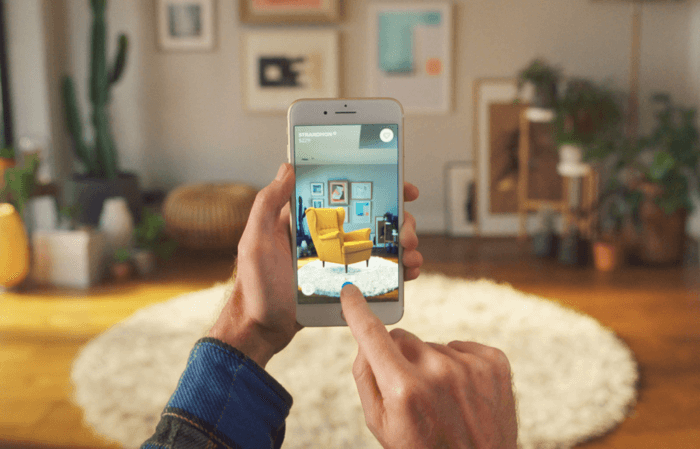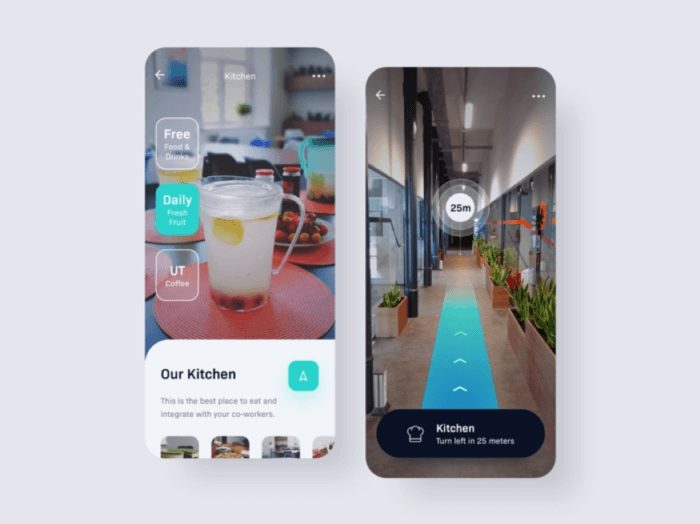The benefits of using Augmented Reality technology for better customer engagement
All of us remember the famous Pokemon Go game and its insane popularity – but can marketers use the same technology to attract users and make them buy more?
Apparently, the answer is yes. AR has proven to be a true gem for marketers as it significantly boosts customer engagement and the level of interest for a product.
Research by Deloitte states that most of the mid-market companies already experiment with AR to improve user experience and the global AR market is expected to reach about $75 billion by 2023.
If used right, AR technology can significantly increase the recognition of your brand among the users and engage them in a more efficient manner. We have looked at the different scenarios where the use of AR will deliver a supreme experience to your customers and will deliver tangible results to your company.
The presale stage: attract and engage
Because we live in the era of the internet, we can easily compare the products online, look for alternatives, and find the best deals with just a few clicks. With such a diversity of choice, the competition between the products has become incredibly tight and marketers need to use the most efficient tools to attract users. AR is one of the ways to do so in an engaging manner.
Almost everyone today owns a smartphone and people download a great number of apps on a daily basis. So, as long as they learn that your business has a brand-new AR application, there is a good chance that they’ll give it a try. Here’s what AR can do for you at this stage:
- Inform the users about the product by scanning the package or the QR code.
- Give an option to “try” the product (i.e. makeup).
- Offer an immersive experience by touring the user through the virtual company’s headquarters.
These are just a few ways of how the AR application can help you attract the users and increase brand awareness.
Some examples to inspire you:
- Sephora Virtual Artist: The app enables the users to “try on” the Sephora makeup before buying it.
- Wanna Kicks: The app that lets the users “try on” the shoes and choose the ones that look the best.
The point of purchase stage: facilitate the buying decision
Many people leave their shopping carts or physical stores without a purchase simply because they are uncertain about it. After all, nobody can predict just how well a product will look in their room or how it will match items they already own. The inability to try the product and the variety of choices lead to indecisiveness and hurt the overall sales.
AR eliminates this uncertainty by enabling people to actually “try” the product and match it with the needed items – all that without even leaving their home. A great example is the Ikea app that lets the users see how the actual piece of furniture would look in their house. After browsing the in-app catalogue and choosing the real Ikea item, users can then drag it around the screen and see how the item fits in the room. This is a really smart solution considering the fact that you do not usually have the option to “try” the furniture before buying it.
On top of this, AR strongly supports the customer’s buying decision by providing additional information on a product in an interactive and visually attractive manner. What many companies started doing is adding QR codes to the product packages that users can scan and receive additional information on the product making process, ingredients, etc.
Examples to inspire you:
- Ikea’s app: Allows you to see how Ikea products will look in your house.
- Audi’s AR app: Lets people test the vehicles and examine them from their phones.

[Image Source]
The post-sale stage: inform and support
A good marketer efficiently sells a product to a customer but a great marketer keeps the customer’s interest after the purchase in order to retain a long-term relationship. This is another area where AR significantly helps marketers retain the customers and engage them even after the purchase is completed.
One of the key things to pay attention to at the post-sale stage is maintenance and support. Unfortunately, many marketers provide customers with kind of blunt and boring documentation and poorly designed FAQs which nobody reads.
AR is one of the ways to make maintenance and support more engaging and educate the customers in the right way. For example, upon scanning a QR code on the packaging, the user then sees interactive instructions and information on their mobile phone screen. The same applies to the AR manuals when the user can scan the item with the phone and see an interactive guide on product usage and maintenance.
AR-based gamification: exploring the product in a fun way
After the Pokemon Go boom, there has been quite a number of AR games that work by the same principle: explore the surroundings via the smartphone camera and collect items, perform tasks, interact with virtual objects. While the primary goal of such games and applications is entertainment, companies can use them to their benefit in order to attract new users and get their attention.
One of the ways to do so is developing an application that educates the users about the product and rewards them with certain incentives upon completing the task. In this way, the user will not perceive the application as pure promotion and will become engaged with the product at an early stage.
AR for employee onboarding and training
One more thing to consider when speaking about customer engagement is the quality of service that your employees provide. AR can help you by providing innovative ways of onboarding and training.
At the onboarding stage, you can provide the employees with a virtual AR tour around the company and its departments, including the key areas to learn about. If a company has multiple offices in different countries, AR is a great way to show new employees them all.
As for the training, AR can help you perform simulations that will teach employees how to act in certain scenarios. This is especially helpful for training employees for such situations as Black Friday, holidays, annoyed clients. In this way, you educate people on how to act and respond to stressful situations so they can efficiently handle them in real life.
Summing up
Though the use of a new and efficient technology sounds incredibly tempting, you should not rush into using it just because it’s trending.
In order for the AR to bring profit to your company, first, define your business goals and the state of the business and see which areas call for optimization. Only after defining the issue, you can come up with a suitable AR solution that will help you resolve it and attract customers to your product.
One more important thing to keep in mind is the quality of your app performance. It’s not enough to implement the AR technology – the app must run in a smooth and bug-free manner. For that, make sure to work with experienced developers who can ensure both the AR integration and high-quality user experience.




